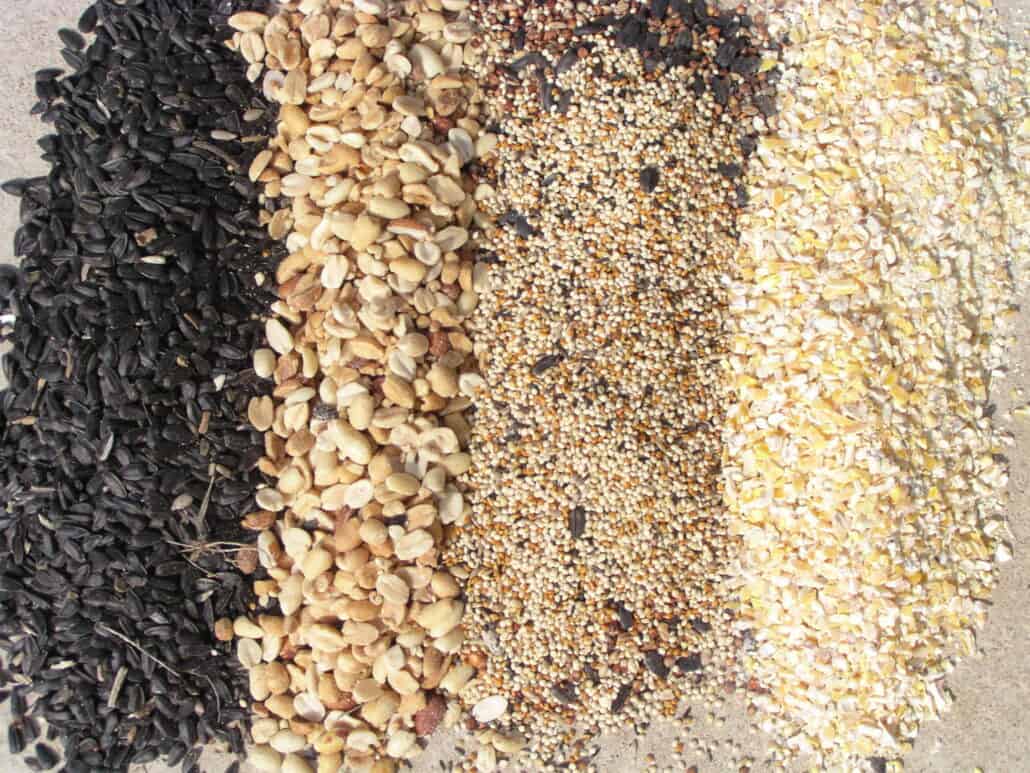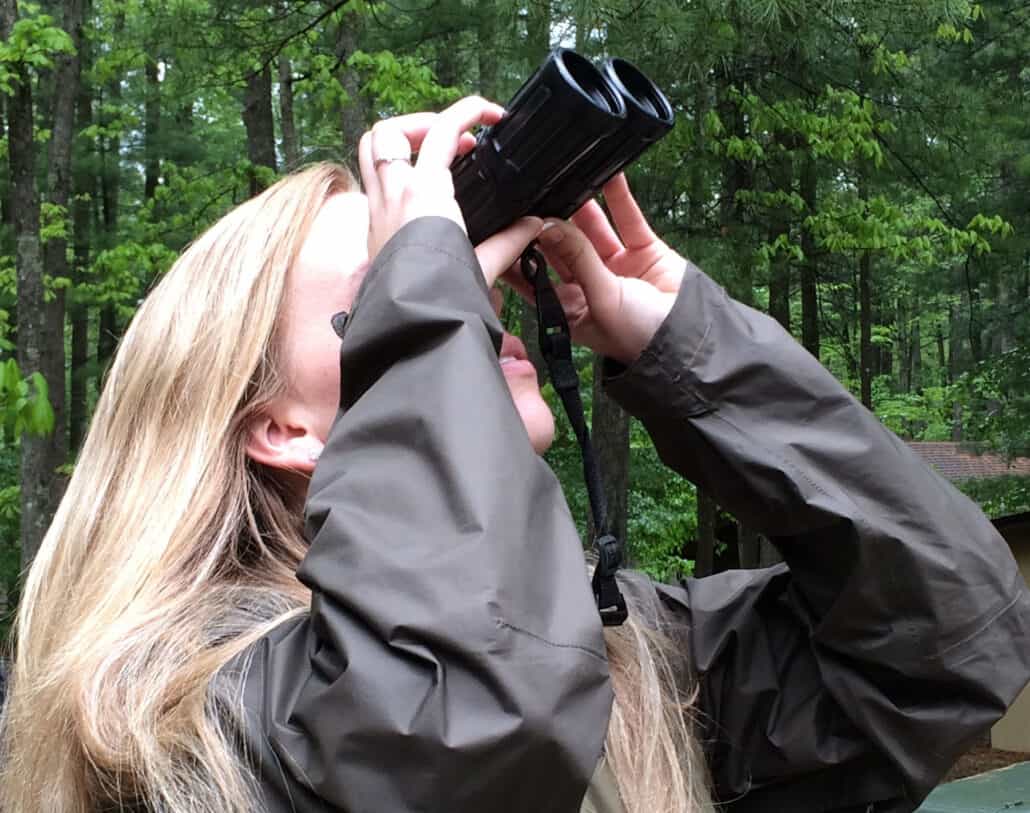Myth: If I touch a baby its parents will abandon it.
Sage advice once warned children not to pick up baby birds because the parent birds would smell the human scent and subsequently reject the babies. Or, you might also hear that birds cannot smell, so human scent on baby birds is irrelevant. So which is it?
Compared with vision and hearing, birds show a minimally developed sense of smell. A few bird species are skilled at detecting the presence of specific odors, but there is no evidence that a robin or any other common backyard bird can smell human scent on its offspring.
It is still wise, however, to avoid touching a nest or nestlings unnecessarily, because mammalian predators such as raccoons and foxes absolutely can detect your scent trail and follow it straight to the nest.
Myth: An owl can spin its head completely around.
Just keep walking in a circle around an owl, and it will strangle itself by twisting its own neck while watching you, right?
People still make this crazy claim!
All birds have a head that swivels on its spine more than any mammal’s head does. Owls have elaborated on this anatomical feature, but the continuity of blood vessels, ligaments, muscles, and skin from head to neck to torso collectively prohibit spinning.
Owls enjoy an enviable ability to twist and swivel. They can turn their head about 270 degrees, but not a full 360, and they certainly cannot spin their heads all the way around.
Myth: Beet sugar in hummingbird nectar won’t attract hummingbirds.
Beet sugar, some people insist, will not produce quality desserts, a shortcoming that likewise affects sugar-water prepared for hummingbirds. This claim has a history.
The beet is a versatile plant that can be grown for its root or its leaves. Through selective breeding techniques, researchers produced a beet with high sugar content. The market for sugar being much larger than the market for beets, these “sugar beets” became an attractive alternative crop on the Great Plains, where sugar cane would not grow.
To protect their market dominance, cane growers developed advertising campaigns that extolled the superior qualities of cane sugar by explaining the inferior qualities of beet sugar.
Lab research eventually proved that beet and cane use two different chemical pathways to produce the same sugar, which when refined from either plant is 99.98 percent pure sucrose. Kitchen research in which neither cooks nor overseeing researchers knew whether they were using beet or cane sugar repeatedly showed no difference in the outcome of desserts based on the origin of the sucrose.
Taste buds, whether hummingbird or human, cannot tell beet sugar from cane sugar.
Myth: Goatsuckers suck milk from goats.
Aristotle, Greek scholar of the third century B.C., explained that the birds approach female goats at night and suck their milk. The Romans picked up this tidbit of natural history and, converting the Greek name to Latin, gave us caprimulgus, meaning “goat milker.”
In your field guide you’ll find that the family Caprimulgidae, the “goatsuckers,” includes several birds with the genus name Caprimulgus. Thus, the Latin name of whip-poor-will, Caprimulgus vociferous, translates to the English name “voice-carrying milker of goats.”
Ecological research has revealed enough fascinating and even bizarre symbioses to allow one to wonder if that common nighthawk flying over the backyard just might—but, no.
Milk is unique to mammals, so the chemistry of milk and the digestive chemistry of birds do not match thoroughly enough for a bird to thrive nutritionally on milk. Many orphaned baby birds have starved to death because Grandma advised feeding them bread and milk.
A 2,300-year-old error, the name goatsucker, despite its status as a historical curiosity, perpetuates a combination of biological and ornithological inaccuracy. No birds, not even the goatsuckers, suck milk from goats or any other mammal.
Myth: Bluebird feathers have blue pigments that give them their brilliant blue colors.
Bluebird feathers, the claim goes, aren’t really blue. But if not, how can the birds look so blue?
Several factors determine feather color, genetics and diet being two obvious influences. Less obviously, feather age matters. Feathers newly grown consequent to molt may become duller or brighter from normal everyday abrasion. Older feathers may appear paler from daily exposure to sunlight.
Feather color is either chemical or structural. Chemical color originates from pigments called “biochromes” embedded within the feathers. These biochromes can be extracted from the feathers and studied.
Structural color has no chemical origin but owes to the physical structure—the “architecture”—of the feather. Certain wavelengths of light are absorbed by the feather and so go unseen. Other wavelengths of light are scattered or reflected, and these get seen.
Bluebird feathers have no blue biochromes, no blue pigments. Instead, it is their structural make-up that allows them to reflect blue light, which makes that color visible to the human eye. So, indeed, a bluebird feather looks blue but is not.
Myth: Birds Fly South for the Winter
Many birds do fly south for the winter. Some stay put in their breeding territories all year long. And some birds head in directions that aren’t south, even for the winter.
Tubenoses—albatrosses, shearwaters, petrels—that nest south of the equator during the southern hemisphere’s summer move northward to escape their winter. Some of them cross into northern waters and overwinter off our coasts during our summer. A few Mexican hummingbirds disperse northwards after nesting and overwintering in Arizona and Texas.
Other birds just complicate the southerly drift. Shorebirds and many songbirds move east before heading south. This phenomenon probably explains why so many western hummingbirds appear in southeastern states during late summer and autumn.
And some goose populations move south-by-west, nesting in the Canadian arctic but wintering in Oregon and California. White pelicans disperse southwest, south, and southeast.
Looking at the big picture of all the migration variations among birds, the safest conclusion might be that birds may not go south to get south.





I love your magazine!!! But do not have a card to subscribe to it. I only have a checking account. I live in Southeast Texas. I don’t know if I would have better luck online finding birds or the magazine also! Y’all have a great website!!!
Allison, Thank you for your kind words! You can also subscribe by mailing a check to us at PO Box 3396, Terre Haute IN 47803.